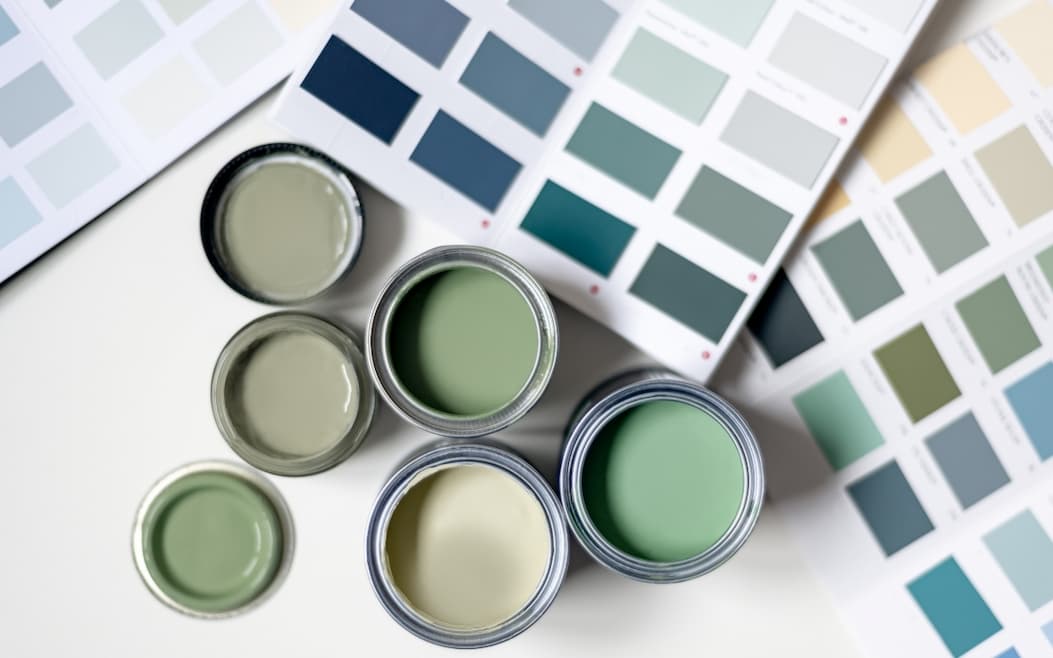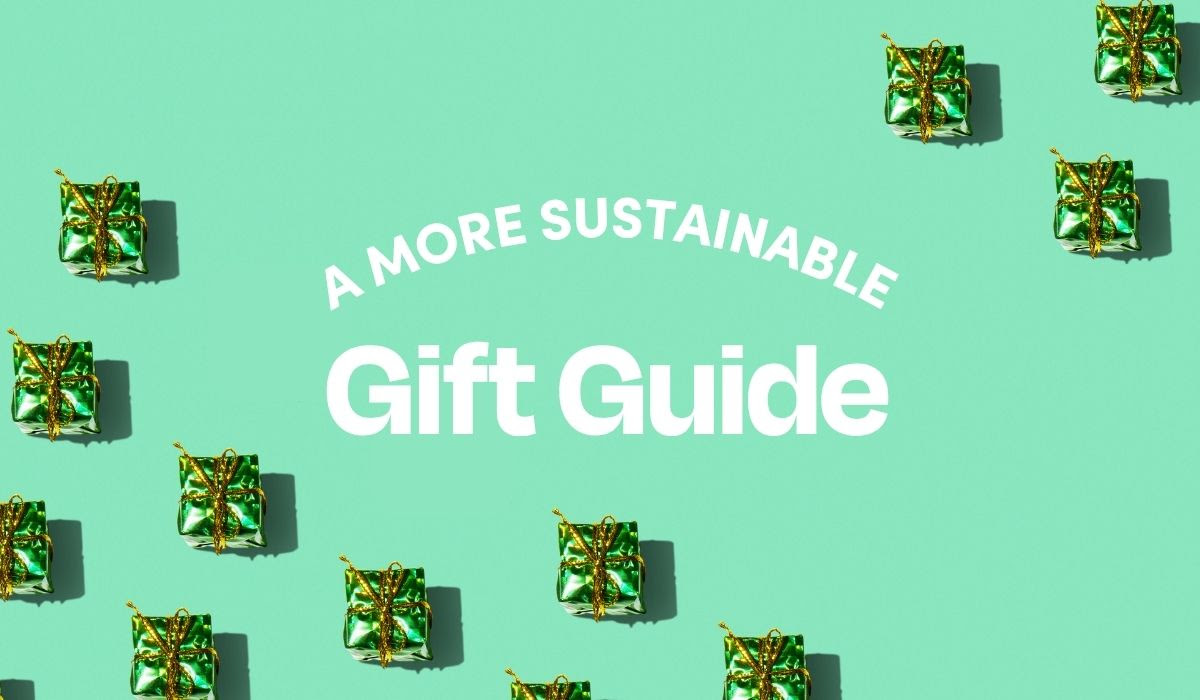Paint and Paint Brushes

How to Choose Sustainable Paint and Paint Brushes
When shopping for paint, prioritize zero-VOC or low-VOC formulas (under 50 g/L) with water-based formulations over oil-based options. Look for certifications like Green Seal, Greenguard Gold, or LEED to ensure products meet strict environmental and health standards. Avoid paints with heavy metals, and opt for natural mineral pigments like iron oxides. For paint brushes, choose those with bamboo or reclaimed wood handles and either natural bristles (if ethically sourced…we’ll get into that later) or synthetic bristles made from recycled materials. Avoid plastic handles and polyester bristles derived from petroleum. Always properly dispose of leftover paint through designated recycling programs rather than pouring down drains or throwing in the trash.
Paint
VOCs (Volatile Organic Compounds)
VOCs are chemicals that evaporate into the air from paint, contributing to indoor air pollution and outdoor ozone formation. According to the EPA, indoor air can be two to five times more polluted than outdoor air, largely due to VOCs emitted by traditional paints. When paint is applied, VOCs can off-gas for days, weeks, or even years after application, with some toxic biocides detectable in the air up to five years later. The health impacts are serious—VOCs can cause eye irritation, breathing difficulties, headaches, nausea, and in high-level exposure, kidney damage and cancer. Needless to say….let’s try to avoid?
What to look for:
- Zero-VOC paint (less than 5 g/L of VOCs): The best option for indoor air quality.
- Low-VOC paint (less than 50 g/L of VOCs): Better than conventional paint, but keep in mind that EPA's "low-VOC" minimum allows up to 250 g/L in latex paints and 380 g/L in oil-based paints, so look for products well below this threshold.
- Water-based formulations: Water-based (latex) paints use water as the main solvent and typically contain 5-10% VOCs, compared to oil-based paints where VOCs make up 40-60% of the contents.
Important caveat: Research has shown that even some zero-VOC and low-VOC paints, including those with green certifications, can still emit harmful chemicals. Some manufacturers add SVOCs (semi-volatile organic compounds) to circumvent solvent classifications, and paints can emit high concentrations of substances like acetic acid. The lesson here is to always ensure proper ventilation during and after painting, even with low-VOC products, and look for brands that provide complete ingredient lists (not just VOC levels) and third-party testing results.
Color considerations: Darker colors and high-gloss finishes tend to contain more VOCs and continue off-gassing longer than flat and low-luster latex paints. We aren’t here to tell you how to design your house, and we love a good color drench, but double-check the VOC content after tinting if you’re using a dark color.
Paint Base: Water vs. Oil
Water-based (Latex) Paint:
- Easier to clean up (soap and water)
- Lower VOC content
- Biodegradable when dried
- Can be dried out and disposed of with household trash in most jurisdictions
- Better for indoor air quality
- Our recommendation for most projects
Oil-based Paint:
- Contains toxic solvents that off-gas more rapidly than latex but can continue releasing VOCs for even longer periods
- Requires turpentine or paint thinner for cleanup (which are themselves hazardous)
- Cannot be put in the trash—must be taken to hazardous waste facilities
- More durable and weather-resistant for certain applications, but the health and environmental trade-offs usually aren't worth it
- If you must use oil-based paint, ensure excellent ventilation and proper protective equipment
Heavy Metals and Toxic Additives
Lead: Although banned in household paints in many countries, lead paint is still used in some regions (especially Eastern Europe and Asia) for industrial purposes like anti-corrosive paint. Lead is a poisonous metal that can damage nerve connections (especially in young children) and cause blood and brain disorders. Never use old paint that may contain lead, and if you suspect your home has lead-based paint, call a certified professional to inspect and remove it.
Tributyltin (in Marine/Anti-fouling Paints): These organotin compounds (contain a tin-carbon bond) are toxic to humans and marine life, causing irreversible damage to aquatic ecosystems and triggering genes that cause fat cell growth in humans. If you're painting anything that will be near water, look for biomimetic antifouling coatings as alternatives.
Hexavalent Chromium: Still widely used in primer paint for aerospace and automobile applications, this is a known carcinogen. Avoid when possible and look for safer primer alternatives.
Biocides and Fungicides
Paints contain fungicides to prevent mildew growth and biocides as preservatives to extend shelf life. Like VOCs, these toxic chemicals contaminate both indoor and outdoor air and can be detected for years after application.
For Exterior Paint:
- All exterior paints need fungicides to prevent mildew
- Look for zinc oxide as the fungicide—it's the safest option
- Low-biocide paints are not available for exteriors
For Interior Paint:
- Seek out paints with very low biocide levels
- Natural alternatives like citrus extracts, essential oils, or clay can provide antimicrobial properties without toxicity
Natural Paint Alternatives
Some brands use natural, plant-based ingredients that offer lower environmental impact:
Milk Paint: Made from milk protein (casein), lime, clay, and earth pigments. It's 100% VOC-free, biodegradable, and can even be food-safe. Brands like Real Milk Paint Co. offer powder forms you mix with water before use, which reduces shipping weight and extends shelf life. The slight milky odor disappears when dry.
Clay Paint: Uses clay as the primary binder with natural pigments. Brands like BioShield offer paints made with clay, citrus extracts, essential oils, natural pigments, beeswaxes, and tree resins.
Plant-based Resins: Natural resins derived from plants serve as binders and provide durable finishes without petroleum-based chemicals.
Pigments
Natural Mineral Pigments: Iron oxides are the most common natural pigments, made from naturally occurring mineral deposits of iron and oxygen. While mining and extraction can cause soil erosion and habitat destruction, they're preferable to synthetic alternatives. In cosmetic and paint use, iron oxides are often synthesized to ensure they're free from heavy metals and contaminants.
Avoid or Use Carefully: Some pigments may contain heavy metals or require intensive processing. Always check that pigments are tested for contaminants.
Certifications to Look For
Green Seal: Ensures the product meets stringent environmental standards, including low VOC emissions and restrictions on toxic ingredients.
Greenguard Gold: Indicates low chemical emissions that protect indoor air quality, with testing specifically designed for sensitive environments like schools and healthcare facilities.
LEED (Leadership in Energy and Environmental Design): Provides certification points for eco-friendly building materials, indicating the paint contributes to sustainable building practices.
CDPH 01350: California's standard for VOC emissions testing, often measured at 11, 12, and 14 days after application for classroom and office use.
Best Paint Brands
- ECOS Paints: Zero-VOC, zero-odor, made in the USA. Provides complete ingredient lists and VOC test results. Covers up to 560 sq. ft. per gallon (1.5x more than conventional paint). Available for interior and exterior applications.
- Benjamin Moore Eco Spec: 100% acrylic, zero-VOC and zero emissions. Green Seal certified. Uses patented Gennex® colorant that keeps paint zero-VOC even after tinting.
- AFM Safecoat: Over 40 years on the market. 100% VOC-free and completely free of HAPs (Hazardous Air Pollutants). Often recommended by doctors for chemically sensitive patients.
- BioShield: Low-odor, zero-VOC paints made with natural materials like clay, citrus extracts, essential oils, natural pigments, beeswaxes, and tree resins.
- Real Milk Paint Co.: Powder milk paint that's 100% VOC-free, food-safe, environmentally safe, and non-toxic. Mix with water before use.
Paint Brushes
The Environmental Problem with Conventional Brushes
Every year, 300 million paint brushes are thrown away in Canada and the U.S. alone, making them a sizable contributor to pollution. The problem isn't just the bristles—it's also the handles and ferrules (the metal bands that hold bristles in place).
Conventional Brush Materials:
- Bristles: Made from polyester, which is created through a chemical reaction involving coal and petroleum—both nonrenewable resources
- Handles: Made from plastic derived from nonrenewable natural gas
- Ferrules: Often made from aluminum or cheap plastic
These materials are petroleum-based, energy-intensive to produce, and contribute to plastic pollution. Brushes made from these materials can end up in landfills, littered on roadsides, or even found in the ocean.
Handle Materials
Bamboo (Best Choice):
- Fast-growing and ready to harvest in 3-5 years compared to trees that take decades
- Absorbs 4 times more carbon dioxide and releases 35% more oxygen than the average tree
- Harvesting doesn't cause soil erosion because roots remain intact
- Strong, lightweight, and durable
- Completely biodegradable
Reclaimed Wood:
- Reduces deforestation by giving wood a second life
- Look for sustainably-sourced wood like beech or oak
- Biodegradable
Corn-Based Handles:
- Made from 65% cornstarch and other environmentally friendly materials
- Corn is highly renewable and biodegrades quickly
- Strong and long-lasting, often outlasting conventional brushes
Avoid:
- Plastic handles (nonrenewable, petroleum-based, major source of pollution)
- Wood from unsustainable sources without FSC or similar certification
Bristle Materials
This is where it gets complicated. The "best" choice depends on your priorities.
Natural Bristles:
- Pros: Biodegradable, excellent performance, hold more paint (so you dip less), provide smooth finishes, absorb water well
- Cons: Require more cleaning and care, raise animal welfare concerns (especially sable farms in Asia), can trigger allergies, may not work well with water-based paints
- Common types: Hog bristle, boar bristle, horsehair, sable, badger, ox, pony
- Best for: Oil-based paints and watercolors
- Ethical considerations: Some animals, particularly sables, face less than ideal quality of life on farms. If choosing natural bristles, research the source and look for ethical certifications.
Synthetic Bristles:
- Pros: Cruelty-free and vegan, easier to clean, don't shed as much, compatible with all paint types including acrylics, can be made from recycled materials
- Cons: Made from nylon or polyester (petroleum-derived), contribute to microplastic pollution if not recycled
- Look for: Synthetic bristles made from recycled materials (like recycled plastic bottles) to minimize environmental impact
- Best for: Water-based paints, acrylics, and when animal welfare is a priority
Plant Fiber Bristles (Emerging Option):
- Made from renewable plant materials
- Softer and more resilient than synthetic
- Dry quickly and clean easily
- Manufactured using gluing processes that avoid bristle loss
- Great for watercolor painting
- Biodegradable
Corn Fiber Bristles:
- Made from cornstarch blended with some synthetic filaments
- 65% corn-based and environmentally friendly
- Biodegradable and long-lasting
- Soft feel for artists and house painters
The Bottom Line: If animal welfare and reducing toxicity are your biggest concerns, choose synthetic bristles made from recycled materials. If biodegradability and renewable resources are most important, natural bristles (from ethical sources) or plant fiber brushes are better. The greenest choice overall is to buy high-quality, long-lasting brushes of either type and take excellent care of them so you need to replace them less often.
Ferrules (The Metal Band)
Recycled Brass or Stainless Steel:
- More durable than aluminum or plastic
- Ensures brushheads don't detach during use
- Look for brushes specifically noting "recycled ferrules"
Biodegradable Steel:
- An emerging option that breaks down naturally
Avoid:
- Aluminum (less durable)
- Plastic ferrules (petroleum-based, less durable)
Best Paint Brush Brands and Features
Paint Disposal
One of the most important aspects of sustainable painting is proper disposal of leftover paint. Improper disposal can contaminate soil, poison wildlife, pollute groundwater, and harm water treatment systems.
What NOT to Do
- Never pour paint down drains or storm drains: Paint chemicals contaminate water treatment systems, killing beneficial bacteria essential for waste processing, and can travel directly into local waterways
- Don't pour paint on the ground: It will contaminate soil and can seep into groundwater
- Don't throw liquid paint in the trash: It's illegal in most places, can leak from garbage trucks, and in landfills, paint moves with water and contaminates groundwater
- Don't overbuy paint: Use online calculators to buy only what you need
Proper Disposal Methods
Step 1: Use It Up (Best Option)
- Apply extra coats to use remaining paint
- Paint scrap wood, cardboard, or the inside of your garage
- Store properly for future touch-ups (seal lid tightly, store can upside down for best seal, can last for years)
Step 2: Donate It
- Give usable leftover paint to neighbors, friends, or relatives
- Donate to community service organizations, theater groups, recreation departments, schools, or local arts programs
- Check if your area has a Community RePaint or similar program
Step 3: Recycle It
- Many communities have paint recycling programs that reprocess paint for other uses
- Look for PaintCare drop-off locations (available in several states including California)
- Some hardware retailers participate in paint take-back programs
- Check your local municipal waste authority for paint recycling options
Step 4: Dry and Dispose (Latex Paint Only)
- Remove lid and leave small amounts (1-2 inches) to air dry in a well-ventilated area away from children, pets, and rain
- For larger amounts, pour 1 inch into a cardboard box lined with plastic, let dry, and repeat in layers
- Mix equal parts cat litter (or sawdust/shredded paper) with paint, stir completely, wait for it to harden
- Once completely dry and solid, latex paint can be disposed of with household trash (leave lid off so collectors can verify it's solid)
- Empty steel paint cans can be recycled
Step 5: Hazardous Waste Collection (Oil-Based Paint and Spray Paint)
- Oil-based paints are considered hazardous waste and must be taken to certified hazardous waste facilities
- Spray paint and aerosol cans (even if labeled "non-toxic") must go to hazardous waste facilities unless completely empty
- Contact your local household hazardous waste (HHW) program for collection days or year-round facilities
- Never attempt to dry oil-based paint or throw in regular trash
State-Specific Programs
- California: Intentionally drying paint without a permit is prohibited. All leftover paint must go to PaintCare drop-off locations.
- Illinois: New Paint Stewardship Act effective January 2024. Don't bring latex paint to one-day hazardous waste collections.
- Check your state's environmental protection agency website for specific regulations
Usage Tips
Reduce Waste from the Start
- Calculate carefully: Use online paint calculators to buy only what you need—the average household buys approximately 2 gallons of paint per person per year, and much of it ends up in landfills unnecessarily
- Choose lighter colors: They typically require less paint for coverage and contain fewer VOCs
- Buy quality paint: Better coverage means you need less product overall (eco-friendly paints often provide superior coverage)
- Opt for flat or low-luster finishes: They off-gas less than high-gloss finishes
Application
- Ventilate properly: Even with low-VOC paint, keep rooms well-ventilated during painting and for at least several days afterward
- Use minimal tools: Apply paint with brushes or rollers instead of sprayers when possible to reduce overspray waste
- Clean tools properly: For latex paint brushes used with water-based paints, rinse in a sink connected to the sewer (check local regulations). For oil-based paint, collect all rinse water and dispose of at hazardous waste facility—never rinse down drain
Coverage Maximization
- Prepare surfaces properly: Clean and sand surfaces to reduce need for multiple coats
- Use sustainable tools: Choose brushes made from recycled materials and reusable cloth drop cloths instead of disposable plastic ones
Fun Fact
- More than two-thirds of the 176 million pounds of VOC emissions generated in California come from paints and coatings.
Final Recommendations
For Paint:
- Choose zero-VOC, water-based paints with complete ingredient transparency
- Look for Green Seal, Greenguard Gold, or LEED certifications
- Prioritize lighter colors and flat/low-luster finishes when possible
- Brands we love: ECOS Paints, Benjamin Moore Eco Spec, AFM Safecoat
For Paint Brushes:
- Choose bamboo or reclaimed wood handles
- Select either ethically-sourced natural bristles OR synthetic bristles from recycled materials
- Look for recycled brass or stainless steel ferrules
- Care for and reuse your brushes as long as possible
For Disposal:
- Always use up or donate paint before considering disposal
- Dry latex paint and dispose with household trash (or check local regulations)
- Take oil-based paint and spray paint to hazardous waste facilities
- Never pour paint down drains or on the ground
- Recycle empty paint cans
By making thoughtful choices about paint and painting supplies, you can dramatically reduce the environmental and health impacts of your home improvement projects while still achieving beautiful results.
Join today to get access to product recommendations,
unlimited articles, and exclusive weekly content.
(16% discount)
Already a member? Log in.
Choose Wisely with Finch

ECOS Paints
Zero-VOC, zero-odor, made in the USA. Provides complete ingredient lists and VOC test results. Covers up to 560 sq. ft. per gallon (1.5x more than conventional paint). Available for interior and exterior applications.


AFM Safecoat
Over 40 years on the market. 100% VOC-free and completely free of HAPs (Hazardous Air Pollutants). Often recommended by doctors for chemically sensitive patients.


Benjamin Moore Eco Spec
100% acrylic, zero-VOC and zero emissions. Green Seal certified. Uses patented Gennex® colorant that keeps paint zero-VOC even after tinting.



Real Milk Paint Co.
Powder milk paint that's 100% VOC-free, food-safe, environmentally safe, and non-toxic. Mix with water before use.


BioShield
Low-odor, zero-VOC paints made with natural materials like clay, citrus extracts, essential oils, natural pigments, beeswaxes, and tree resins.

Learn more about our sources and methodology
LEARN MORE










